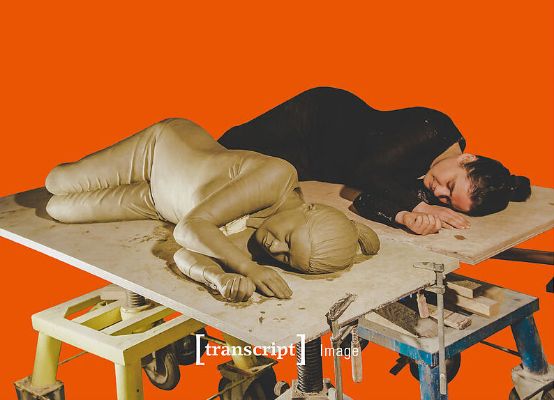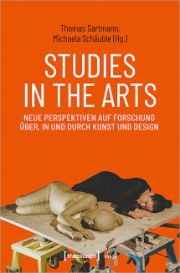Treading old paths
Contributions from the joint doctoral program of the Faculty of Philosophy and History of the University of Bern and the Bern University of the Arts.

The so-called Bologna Process began in 1999 - and it had consequences that were hardly foreseeable at the time. Essentially, it involved the transnational transformation of art and music academies into universities or colleges. At first, this sounds like institutional funding stories, but it also had serious consequences for research issues. "Art as research" is now the name of the game: musicians and artists research something themselves. Or their practical work or work process serves as a means of gaining knowledge.
Studies in the Arts offers insights in the form of 13 contributions from the joint doctoral program of the Faculty of Humanities of the University of Bern and the Bern University of the Arts: What can artistic research achieve? What impulses can it provide? Unfortunately, it has to be said that reading the anthology is sobering, and the essays are almost entirely disappointing. Criticism of stolid musicology faculties is fine. But it is bad when some standards are simply ignored. Bettina Ruchti's study of the 10th and 11th century calendars from Einsiedeln Abbey is no more and no less than a study of sources, which have been commonplace for some time now. The same applies to Manuel Bärtsch's - certainly accurate - examination of Wagner interpretations from the early 20th century. Interpretation research is now a matter of course in serious musicology. Hermann Gottschewski's dissertation, published in 1993, is worth mentioning: The interpretation as a work of art: musical time design and its analysis using the example of Welte-Mignon piano recordings from 1905.
In the words of the great musicologist Carl Dahlhaus, it must be said that what "art as research" means is not clear. Perhaps a young discipline cannot be accused of lacking a profile. But the level of reflection is also questionable. Gaudenz Badrutt's discussion of The uniqueness of repetition when listening to improvised and composed electroacoustic music seems bold even in the title. What follows are superficial observations on the reception of Luc Ferrari's tape works garnished with a few words on listening to recordings and on the change of perspective between written and aural analysis. Well, yes.
The assessment remains that it is primarily about institutional issues and less about content. Art certainly serves to enrich the world, which can be deepened through verbal reflection. However, for the time being at least, the work of the musical research department at Bern University of the Arts must be seen as a supplement to musicological research. A new departure, which one might hope for, is missing. In any case, there is little evidence of the "new perspectives on research on, in and through art and design" mentioned in the volume's subtitle.
Studies in the Arts - New Perspectives on Research on, in and through Art and Design, ed. by Thomas Gartmann and Michaela Schäuble, 212 p., € 39.00, Transcript, Bielefeld 2021, ISBN 978-3-8376-5736-4,
Open Access (PDF)








